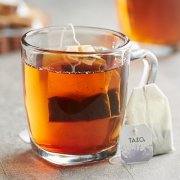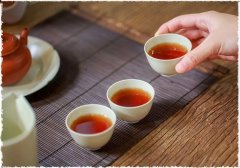Detailed introduction of the method of Variety treatment in African Ugandan Coffee producing areas
African Ugandan Coffee
Ugandan coffee beans have a unique flavor of delicate flavor, which is very suitable for making Italian and other flavors of coffee. Coffee is the largest crop in Uganda, with about 500000 coffee farms engaged in coffee-related agriculture, accounting for 25 per cent of the total population. Coffee trees are mostly robusta coffee trees with strong growth, accounting for about 94 per cent of coffee cultivation in Uganda. Only 6 per cent are traditional Arabica tree species, these rare coffee beans grow in tropical rainforests and most of them are exported to countries around the world. Although Uganda is a big producer of Robusta, there are still good quality Arabica beans such as typica, SL14, SL28, Kenyan coffee is world-famous for SL28 and SL34, so the Ugandan government vigorously promotes and distributes SL seeds to farmers.
Coffee producing areas:
The Robusta variety is grown at low elevations in central, eastern, western and southeastern Uganda, up to 1200 metres above sea level.
Arabica is grown in the Elgon Mountains, the West Nile and the Renzori Mountains.
Coffee varieties:
Robusta, Arabica: typice, SL14, SL28.
Kenyan coffee is famous for SL28 and SL34, so the Ugandan government promotes it vigorously and distributes SL seeds to farmers.
Coffee processing:
Sun treatment, water washing treatment.
Ugandan coffee grading:
Ugandan coffee is graded much like Kenya, by size and density.
AA grade with excellent quality (flavor, taste) in AA Plus (AA+) cup.
AA particle size (Screen Size) 17 Murray 18 size.
AB particle size (Screen Size) 15 Murray 16 size, accounting for the majority of production.
C particle size (Screen Size) is smaller than that of AB.
TT uses an airflow filter to blow lighter beans from AA and AB beans.
T from C-grade beans, lighter beans blown by an airflow filter.
E Elephant Bean two beans into one of the large mutant beans, also known as elephant ear bean Elephant ear.
UG does not meet the above criteria.
PB Peaberry, classified by appearance, has nothing to do with flavor weight.
Important Notice :
前街咖啡 FrontStreet Coffee has moved to new addredd:
FrontStreet Coffee Address: 315,Donghua East Road,GuangZhou
Tel:020 38364473
- Prev

What's the difference between Earl Grey Tea and black tea? When will the rich Earl's seasoned tea be ready?
Earl Grey tea originated in England in the 1820s and later became one of the most popular kinds of tea in the western world. The unique added flavor of bergamot citrus fruits gives Earl Grey tea a unique aroma and flavor, which was originally intended to make the new Indian black tea have the citrus quality naturally found in Chinese high-quality black tea. With the popularity of classic recipes, Earl Grey made tea.
- Next

The technological process of how black tea is processed illustrates the whole fermentation process of black tea.
Although there are many variables that affect the final taste of tea in the process of making tea, oxidation is arguably the most influential step. From the beginning of tea picking, with the rupture of the cell wall, oxidation occurs, and the enzymes in the tea are exposed to oxygen in the air. The tea begins to turn brown until it is heated, the active enzyme denaturates and maintains the required oxidation level in the finished tea. What we did today
Related
- Beginners will see the "Coffee pull flower" guide!
- What is the difference between ice blog purified milk and ordinary milk coffee?
- Why is the Philippines the largest producer of crops in Liberia?
- For coffee extraction, should the fine powder be retained?
- How does extracted espresso fill pressed powder? How much strength does it take to press the powder?
- How to make jasmine cold extract coffee? Is the jasmine + latte good?
- Will this little toy really make the coffee taste better? How does Lily Drip affect coffee extraction?
- Will the action of slapping the filter cup also affect coffee extraction?
- What's the difference between powder-to-water ratio and powder-to-liquid ratio?
- What is the Ethiopian local species? What does it have to do with Heirloom native species?

